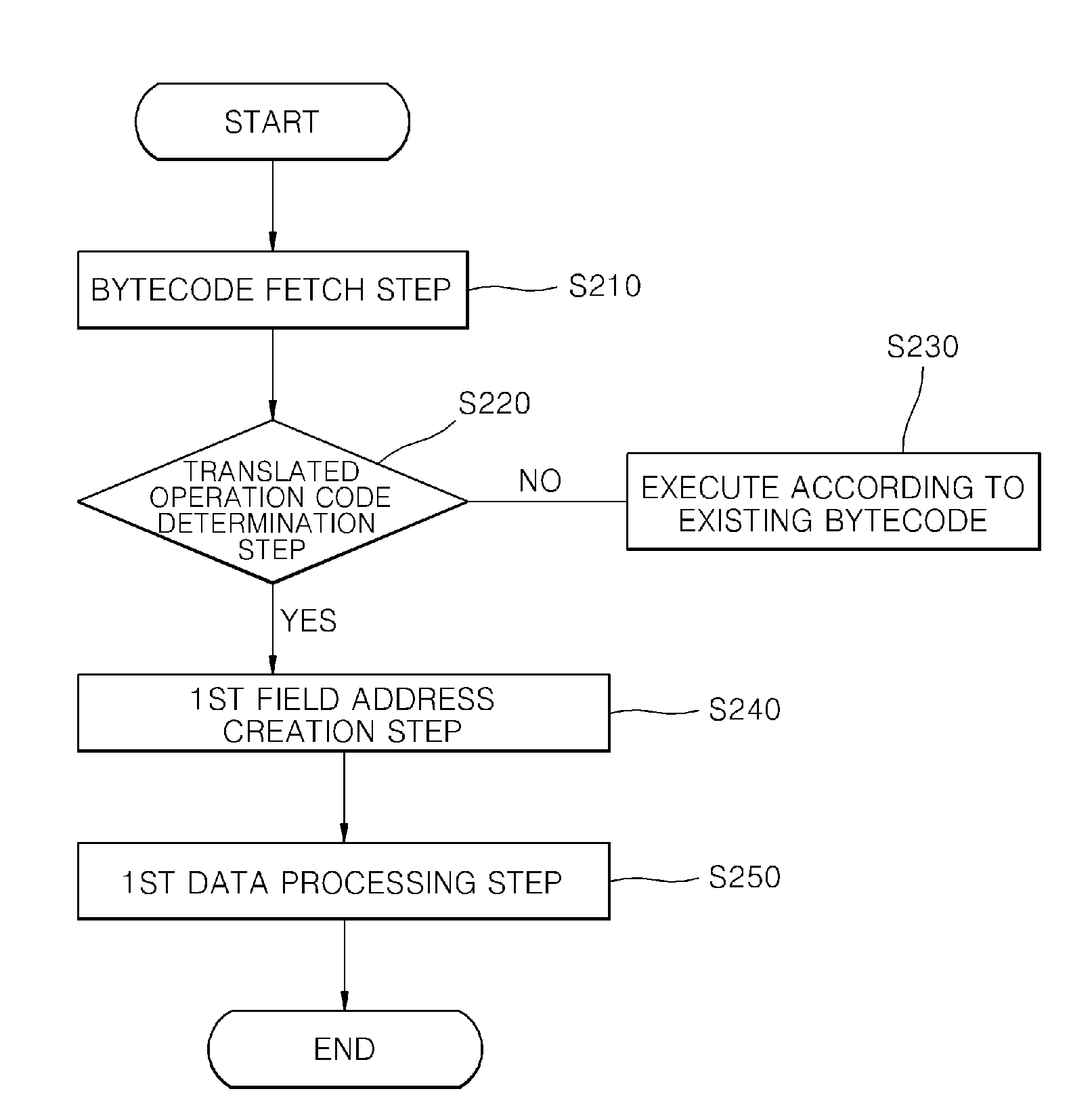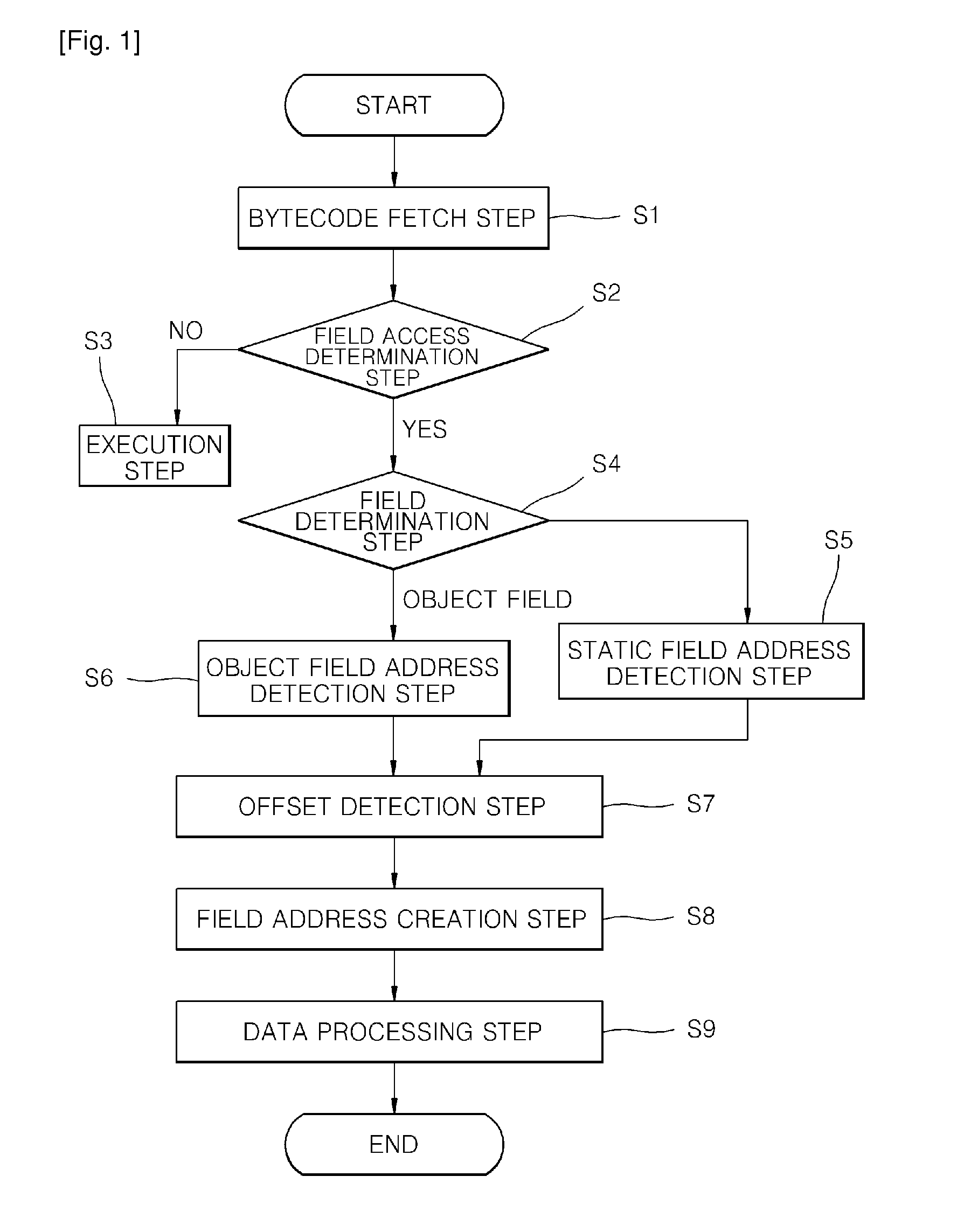JAVA bytecode translating method
a bytecode and translation method technology, applied in the field of java bytecode translation methods, can solve the problems of degradation, slow execution speed of bytecode analysis, defective java programming language, etc., and achieve the effect of reducing the number of native codes
- Summary
- Abstract
- Description
- Claims
- Application Information
AI Technical Summary
Benefits of technology
Problems solved by technology
Method used
Image
Examples
Embodiment Construction
[0049]Hereinbelow, a Java bytecode translating method according to a preferred embodiment of the present invention will be described with reference to the accompanying drawings. Like reference numerals denote like elements through the following embodiments.
[0050]FIGS. 5 and 6 are flowchart views showing a Java bytecode translating method for static field access according to the present invention, respectively, and FIGS. 7 and 8 are block diagrams for explaining the Java bytecode translating method for static field access according to the present invention, respectively.
[0051]As illustrated in FIGS. 5 to 8, the Java bytecode translating method according to an exemplary embodiment of the present invention, includes a bytecode fetch step (S110), a static field address detection and data processing step (S140), a static field address storage step (S150), a static operation code translating step (S160), a first field address creation step (S240), and a first data processing step (S250).
[...
PUM
 Login to View More
Login to View More Abstract
Description
Claims
Application Information
 Login to View More
Login to View More - R&D
- Intellectual Property
- Life Sciences
- Materials
- Tech Scout
- Unparalleled Data Quality
- Higher Quality Content
- 60% Fewer Hallucinations
Browse by: Latest US Patents, China's latest patents, Technical Efficacy Thesaurus, Application Domain, Technology Topic, Popular Technical Reports.
© 2025 PatSnap. All rights reserved.Legal|Privacy policy|Modern Slavery Act Transparency Statement|Sitemap|About US| Contact US: help@patsnap.com



